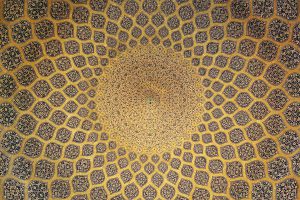On the Importance of Being Acquainted with the Scholars’ Death Dates
By Mln. Abrar Habib (Takmīl Graduate, 2019)
One should not rely on a naql (trans. citation) without verifying its source. The researcher must ensure that what he is quoting is accurate. This will save one from erring. As one studies the Ḥanafī Madhhab, he may find instances where a latter-day scholar inaccurately attributes or misquotes from earlier sources.
The following enumerates five examples in which a mistaken ascription occurred. And that inaccurate ascription may elude one who is unacquainted with the scholars’ death dates.
(1) In his commentary on al-Siyar al-Kabīr, Sarakhsī mentioned that when Imām Awzāʿī acquired a copy of al-Siyar al-Ṣaghīr, he said:
“Whose book is this?” It was said to him: “It is Imām Muḥammad’s.” He responded by saying: “Why do the Iraqīs write on this topic (i.e. siyar)? They have limited knowledge regarding it because the Messenger and his Companions’ military expeditions happened in the Levant and in the Hejaz but not Iraq. Iraq was conquered recently.”
These remarks came to Imām Muḥammad’s attention and they infuriated him. Subsequently, he commenced writing al-Siyar al-Kabīr. Then, after Awzaʿī reviewed al-Siyar al-Kabīr, he said:
“If it were not for the aḥādīth contained herein, I would accuse him of copying this. But Allāh decreed that the correct answer be in his favor. Allāh spoke the truth where He said: “[…] Above every individual with knowledge is someone more knowledgeable.” (Q 12:76)
Thereafter, Imām Muḥammad ordered that sixty copies of al-Siyar al-Kabīr be prepared and sent to the caliph. The caliph was amazed at his work.[1]
However, this incident cannot be historically accurate. Imām Awzāʿī passed away in AH 157.[2] And the earliest opinion regarding Imām Muḥammad’s birth date places it in AH 132.[3]
Thus, Imām Muḥammad could not have been younger than twenty-five when Awzāʿī passed. We also knew that al-Siyar al-Kabīr is Imām Muḥammad’s final work.[4] Imām Muḥammad passed in AH 189.[5] This means he did not author a single book during the last thirty-two years of his life, when he reached the highest point in his scholarly career; this is improbable.
(2) Regarding when Ibn ʿĀbidīn, who passed in AH 1252,[6] cites from al-Lubāb in Radd al-Muḥtār, an inexperienced researcher may assume that it is the work of ʿAbd al-Ghanī al-Maydānī, who passed in AH 1298.[7] However, it is unlikely that Ibn ʿĀbidīn cited from his student; especially from one who passed away in AH 1298, forty-six years after him. From this, it is understood that he is citing from someone else. With additional research, one will come to know that, when he cites al-Lubāb, he is citing from Raḥmat Allāh al-Sindī, who passed in the year AH 978. Raḥmat Allāh al-Sindī authored Lubāb al-Manāsik.[8]
There is another Sindī scholar, Ghulām Muṣṭafā al-Sindī, who wrote a commentary on Mukhtaṣar al-Qudūrī. In his commentary, he relates a difference of opinion on a purification issue. He explains that one of the opinions is found in Fatāwā Qāḍī Khān and al-Lubāb. Furthermore, he mentioned that Ibn ʿĀbidīn followed both authors in this opinion.[9] As I established, Ibn ʿĀbidīn was Maydānī’s teacher, and it would be improbable for him to cite from his student. This seems to be a mistake from Ghulām Muṣṭafa al-Sindī. One aware of the dates should recognize this.
(3) Ibn ʿĀbidīn often cites from al-Maṭlab al-Fāʾiq, which was authored by Badr al-Dīn Muḥammad al-Dīrī. Dīrī passed in AH 1087.[10] However, this cannot be accurate as two other Ḥanafīs who passed prior to this date cite from him: Dāmād al-Afandī, who passed in AH 1077, cites from him in his Majmaʿ al-Anhur.[11] And Raḥmat Allāh al-Sindī, who passed in AH 978,[12] cites from him in Jamʿ al-Manāsik.[13]
It may be possible that Dāmād al-Afandī cited one of his contemporaries, although unlikely. Contemporaries generally do not cite from each other. But it is impossible for Raḥmat Allāh al-Sindī to cite someone who came a hundred years after him. The author of al-Maṭlab al-Fā’iq did not die in AH 1087. Through further research, one will find that he passed in AH 914.[14]
(4) In an issue related to the sanctity of Paradise, the author of al-Fatāwā al-Tātārkhāniyyah, Farīd al-Dīn al-Hindī, quotes Signāqī. Signāqī passed in AH 711.[15]
The famous Tumurtāshī is Shams al-Dīn Muḥammad b. ʿAbd Allāh al-Tumurtāshī. He is the author of Tanwīr al-Abṣār wa Jāmiʿ al-Biḥār while this Tumurtāshī passed away sometime after AH 1007.[16] Signāqī passed in AH 711.[17]
It is impossible for Signāqī to quote someone who came nearly three hundred years after him. Thereby, Signāqī cannot be referring to the author of Tanwīr al-Abṣār. He must be referring to someone else. After further investigation, one will conclude that he is referring to Ẓahīr al-Dīn Tumurtāshī, who passed away around AH 600.[18]
(5) The following passage comes in Furfūr’s edition of Ḥāshiyat Ibn ʿĀbidīn:[19]
قلت: قدمنا هذه الكيفية عن اللباب، وأنها مستحبة لا متعينة، وبه صرح في فتح القدير أيضا قائلا في تعليله: وتبعه القاري في شرح اللباب…إلخ
When reading this, one may notice that there is a colon between the words “taʿlīluhu” and “tabiʿahu al-Qārī.” This gives the impression that Ibn al-Humām, who passed in AH 861,[20] is referencing Mullā ʿAlī Qārī, who passed in AH 1014.[21]
One who is familiar with death dates would immediately see the issue. Ibn al-Humām is not referring to someone who passed over one hundred and fifty years after him. After some thought, one will realize that the publishers made a typographical error in the placement of the colon and probably intended to place a period or comma instead.
In conclusion, knowing the scholars’ death dates is important. Verification is the researcher’s responsibility. Without being able to identify where a specific scholar comes in the timeline, one will be disadvantaged.
[1] Sharḥ al-Siyar al-Ṣaghīr li al-Sarakhsī, 1:4.
[2] Tahdhīb al-Kamāl fī Asmāʾ al-Rijāl, 17:315.
[3] Lisān al-Mīzān, 7:60.
[4] Sharḥ al-Siyar al-Ṣaghīr li al-Sarakhsī, 1:4.
[5] al-Ṭabaqāt al-Kubrā li Ibn Saʿd, 25.
[6] Al-Aʿlām, 6:42.
[7] Hadiyyat al-ʿĀrifīn, 5:274.
[8] Hadiyyat al-ʿĀrifīn, 1:366.
[9] Sharḥ Mukhtaṣar al-Qudūrī, 61.
[10] Laʾālī al-Maḥār, 1:304.
[11] Hadiyyat al-ʿĀrifīn, 1:549.
[12] Hadiyyat al-ʿĀrifīn, 1:366.
[13] Raḥmat Allāh al-Sindī authored three books related to manāsik. They are: Jamʿ al-Manāsik, Lubāb al-Manāsik, and Zubdat al-Manāsik.
[14] al-Kawākib al-Sāʾirah, 1:81.
[15] al-Fatāwā al-Tātārkhāniyyah, 2:247.
[16] Dirāsat Fatāwā al-Tumurtāshī, 1:46.
[17] Hadiyyat al-ʿĀrifīn, 3:250.
[18] Muʿjam al-Muʾallifīn, 1:167.
[19] Ḥāshiyat Ibn ʿĀbidīn, 7:57.
[20] Al-Aʿlām, 6:255.
[21] Al-Fawāʾid al-Bahiyyah, 6.


